Our Location
Steel is renowned for its strength, but only a few people know that various types of steel are available. The alloying process involves blending a base metal with other metallic elements, producing hundreds of types of steel, each offering different physical properties. Steel can be improved using different alloying elements, but chromium is one of the most popular. Chromium helps to reduce steel’s weakness to corrosion, and as a result, stainless steels are highly sought after and used in many modern applications, including kitchenware and medical devices. This article will focus on 430 stainless steel, a widely used material. It will explore the composition, properties, and uses of stainless 430 to give readers an idea of why it is so popular and how it can be used in their projects when considering steel.
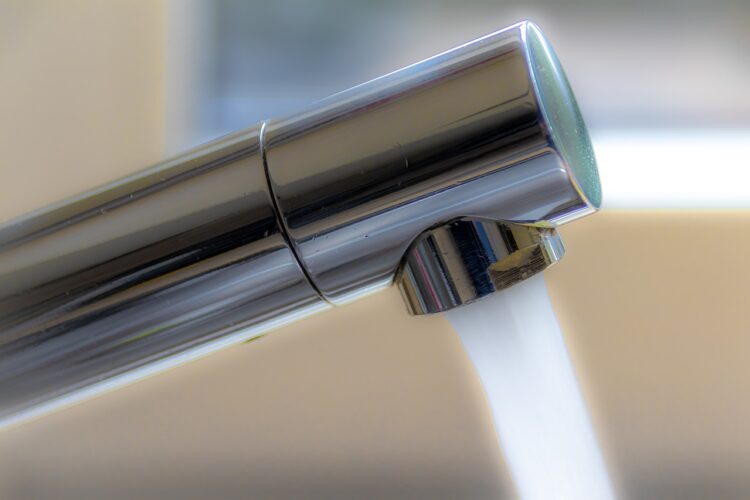
Table of Contents
Toggle430 stainless steel belongs to the 400 series of stainless steel and is a ferritic stainless steel alloy. This material is known for its corrosion resistance, moderate strength, and affordability compared to other grades of stainless steel. It comprises around 17% chromium, which provides it with corrosion-resistant properties. However, it has a low nickel content of approximately 0.75% (maximum), which makes it less expensive than austenitic stainless steel.
430 stainless steel is commonly used where corrosion resistance is necessary, such as in kitchen appliances, automotive trim, architectural trim, and industrial equipment. It is also used for some cookware and utensils. Nonetheless, it is not appropriate for highly corrosive environments. While 430 stainless steel offers good corrosion resistance in pH-neutral and mildly acidic environments, it is prone to pitting corrosion in saltwater environments.
430 stainless steel is produced through melting and refining in a furnace using reducing agents that purify the melt. This furnace can be an electric arc furnace heated by arcing between two carbon electrodes or an induction heating furnace surrounded by a high-power AC coil. In both cases, the highest steel grades are produced through purification under a vacuum. After this process, the steel undergoes hot working and heat treatment.
Stainless steel must contain a minimum of 10.5% chromium. When cooled from the liquid phase, steel undergoes transformations from ferritic α phase to austenitic γ phase, then back to α until around 13% chromium. With carbon and rapid cooling, some austenite becomes martensite. Tempering/annealing transforms martensite to ferrite and carbides. Above 17% chromium, the steel is always ferritic.
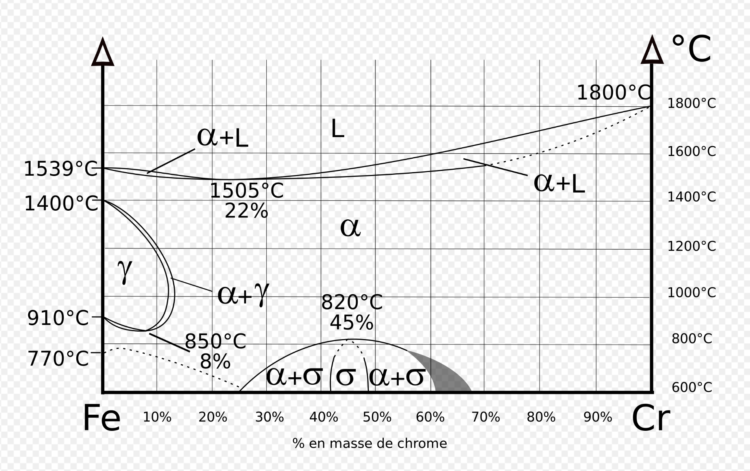
The chemical compositions of various elements of 430 ss are tabulated below.
| Element | Percentage |
| Phosphorus (P) | <=0.04% |
| Sulfur (S) | <=0.03% |
| Silicon (Si) | around 1.0% |
| Manganese (Mn) | <=1.0% |
| Carbon (C) | 0.12% |
| Nickel (Ni) | 0–0.75%* |
| Chromium (Cr) | 16–18% |
| Iron (Fe) | typically 85%+ |
| *sometimes reported as 0.5% max. |
| Property | Value |
| Density | 7.62–7.82 g/cc |
| Electrical Resistivity | 0.60 x 10-6 Ω.m |
| Coefficient of Expansion | 5.8 x 10-6 microinches/in.-°F (70-600°F) / (10.4 μm/m-°C) (20-300°C) |
| Magnetism | Typical permeability of 800(600-1100). Moderately responsive to magnetic fields; acts as a moderate magnetic flux carrier due to its ferritic structure. NOTE: 430F (free machining grade) has an elevated sulfur content and is considered nonmagnetic. |
| Property (Annealed) | Value |
| Yield strength | 345 MPa at a strain of 0.2% |
| Ultimate tensile strength | 517 MPa |
| Hardness | 85 Rockwell B |
| Modulus of elasticity | 200 GPa |
| Shear Modulus | 11000 ksi |
| Elongation at Break | 25% |
| Property | Value |
| CTE, linear 20°C | 10.4 µm/m.°C |
| CTE, linear 250°C | 11 µm/m.°C |
| CTE, linear 500°C | 11.3 µm/m.°C |
| Specific Heat Capacity | 0.46 J/g.°C |
| Thermal Conductivity | 23.9 W/m.K at 100°C |
| Thermal Expansion | 10.4 x 10-6/K at 100°C |
| Melting Point | 1425 – 1510 °C |
| Max Service Temp | 815 °C continuous, 870 °C short time |
| Min Service Temp | -40 to -70 °C |
| Annealing Temp | 790–835 °C |
| Stress Relief Annealing | 430–595 °C |
430 stainless steel is known for its excellent oxidation resistance. It can withstand temperatures of up to 870°C (1598°F) intermittently and up to 815°C (1499°F) continuously. However, it can become brittle at room temperature, especially when exposed to temperatures of 400-600°C (752-1112°F) for a long time. Fortunately, this issue can be resolved through annealing.
All ferritic grades of stainless steel, including SS430, exhibit excellent resistance to stress corrosion cracking. SS 430 is also good at resisting corrosion by various substances, like certain organic and nitric acids. The corrosion resistance can be enhanced by polishing or buffing the surface. Similar to SS 304, it can resist both pitting and crevice corrosion. However, the machining grade 430F, which is high in sulfur, has relatively lower resistance to pitting and crevice corrosion compared to non-free machining grades.
To perform solution annealing on ss 430 stainless steel, it needs to be heated to a temperature range of 815 – 845°C (1499-1553°F). After reaching the desired temperature, it should be cooled slowly in the furnace to 600°C (1112°F). Then, it needs to be air-cooled quickly to avoid embrittlement, as slow cooling between 540 and 400°C (1004 and 752°F) can cause this issue.
For subcritical annealing, the stainless steel should be heated to 760-815°C (1400-1499°F), followed by either air cooling or water quenching.
It’s important to note that this particular stainless steel grade cannot be hardened through thermal treatment.
When welding 430 stainless steel, it is important to pre-heat it to 150-200°C (302-392°F). If the welded metal becomes brittle, the affected area can be annealed at 790-815°C (1454-1499°F) after welding, although this will not lead to grain refinement. The appropriate filler rods will depend on the application, but SS 430, 308L, 309, or 310 are all recommended options.
430 stainless steel has a low work hardening rate, which makes it easy to bend and form. However, its low ductility rate makes it difficult to perform very rigorous operations. SS 430 wire can handle rigorous cold heading, but sub-critical intermediate annealing may be required for extreme cold working.
430 stainless steel is easier for machining than standard austenitic steels like SS 304. However, galling is a possibility. Bars that are lightly drawn are more accessible to machines than those that are annealed. If you want something easy to machine, you should go for grade 430F.
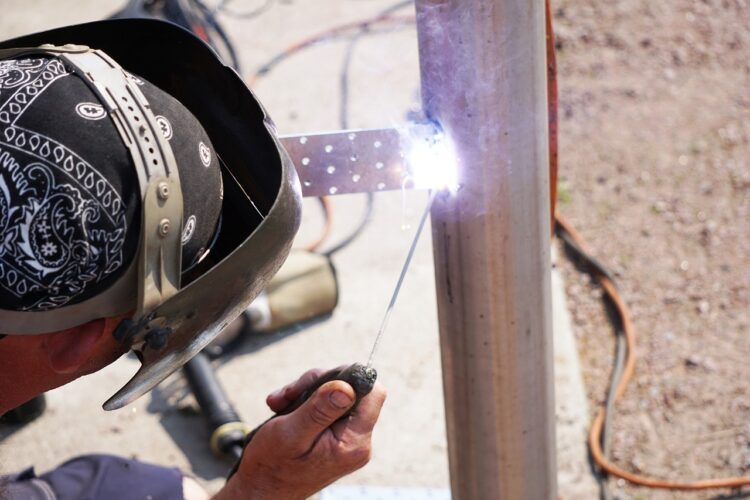
430 stainless steel is equivalent to the Chinese GB, ISO, Japanese JIS, and European EN standards, such as Germany’s DIN EN and British BS EN.
| Country | Standard | Equivalent Grade |
| ISO | ISO 15510 | X6Cr17 |
| US | AISI, ASTM A276/A276M; ASTM A240/A240M | 430 (UNS S43000) |
| China | GB/T 20878; GB/T 1220; GB/T 3280 | 1Cr17 (10Cr17) |
| European Union | EN 10088-1; EN 10088-2; EN 10088-3 | X6Cr17 (1.4016) |
| Germany | DIN EN 10088-1; DIN 17440 | X6Cr17 (1.4016) |
| Japan | JIS G4303 | SUS430 |
| British | BS | BS 430S17 |
| EN | EN60 | |
| Canada | CSA | 430 |
| Maxico | DGN | 430 |
| Australia | AS | 430 |
| Sweden | SS | SS2320 |
| India | IS | 05Cr17 |
Equivalent-Grade Steels from Different Countries
Manufacturers produce 430 stainless steel in various profiles and forms to suit different applications and processes. Here are some common forms:
Sheet is a flat material that comes in various rectangular shapes and sizes. Although the definition of “sheet” may vary, it is usually 0.5 to 3.5 mm thick. This material can be manufactured in both hot-rolled and cold-rolled conditions. Cold-rolled sheets undergo a degree of work-hardening, which makes them stronger and harder, while hot-rolled sheets are in the annealed state, making them entirely soft and highly ductile. The edges of the 430 stainless steel sheets can be supplied as full round, skived, or slit. A full round is only available on the as-rolled edges, not cut edges. The edges can be skived, meaning they are beveled off in a single-pass cut or slit, which is generally a roller cut to a square edge.
Bars can be manufactured in various shapes, such as round, hexagonal, strip, or any other custom profile, as per the customer’s or product’s requirements. The shape of the bar is determined by either hot or cold rolling, depending on the hardness specification and surface finish requirements. Additionally, bars are available in a range of profile sectionals, which can be either regular or irregular (asymmetric) in profile.
Plates are made with the same specifications as sheets but with greater thickness. The thickness at which a material can be called a “plate” is arbitrary. However, any thickness greater than 3 mm is generally called a plate. Plates are commonly supplied in rolled thicknesses of 100 mm or more in different work-hardened, stress-relieved, or annealed states.
In addition, other forms of 430 stainless steel are available such as strips, tubes, pipes, fittings and flanges.
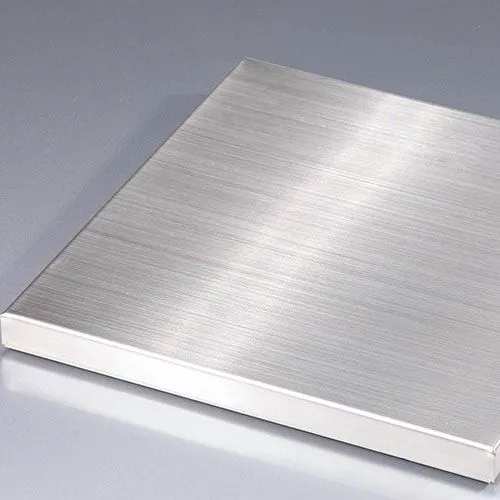
stainless steel 430 plates
Here are some examples of surface finishes that can be applied to 430 stainless steel:
Finish
By default, stainless steel plates have a hot-rolled, annealed, or rough finish, which is typically not used for decorative purposes.
2B Finish
The 2B finish is a commonly used finish for stainless steel, such as 430 stainless steel. It is achieved by cold rolling the stainless steel and then annealing it in a controlled atmosphere. This finish is smooth, reflective, and moderately bright.
No. 3 Finish
Progressively finer abrasives are used to mechanically polish stainless steel to achieve a No.3 finish, also known as a ground finish. This finish has a unidirectional grain pattern and a semi-reflective appearance.
#4 Finish
#4 finish is the most popular finish for stainless steel appliances and decorative applications. It is achieved by polishing the No. 3 finish with even finer abrasives. The result is a smoother, satin-like finish with a low reflectivity.
Brushed Finish
Brushed finishes can be applied to 430 stainless steel. This process involves using abrasive pads or belts to create a directional grain pattern on the surface. Depending on the desired appearance, brushed finishes can range from fine hairline textures to coarser satin finishes.
Bright Annealed Finish
A bright annealed (BA) finish is achieved by annealing stainless steel in a controlled atmosphere and then mechanically polishing it. This produces a highly reflective, mirror-like finish with a smooth surface.
Etched Finish
Etching is a process that involves the use of chemicals to create decorative patterns or designs on the surface of stainless steel. To begin, a resist material is applied to the metal, and then the desired pattern or design is etched into the surface using an acid or chemical solution. The resulting etched stainless steel finish can range from subtle textures to intricate designs, providing a unique and artistic appearance.
Embossed Finish
Embossed finishes involve creating textured surface patterns on stainless steel by pressing it between rollers with the desired design.
Hammered Finish
Hammering is a technique for creating a unique and irregular pattern on stainless steel surfaces. This gives them a rustic appearance, which adds visual interest and character to them.
Bead-blasted Finish
Bead blasting is a process that involves the use of tiny glass beads or other abrasive particles that are propelled against the surface of stainless steel at high pressure. This process uniformly creates a matte texture with a slightly rough surface. Bead-blasted stainless steel is often used in industrial or architectural settings, providing a durable and non-reflective surface.
Colored Finishes
Besides various mechanical finishes, stainless steel can be coated with colors through PVD (Physical Vapor Deposition) or LIC (Light Interference Coating), offering multiple color options and finishes.
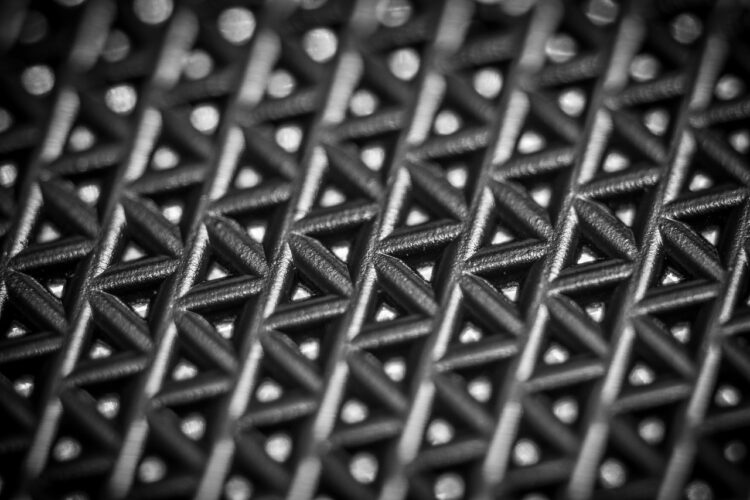
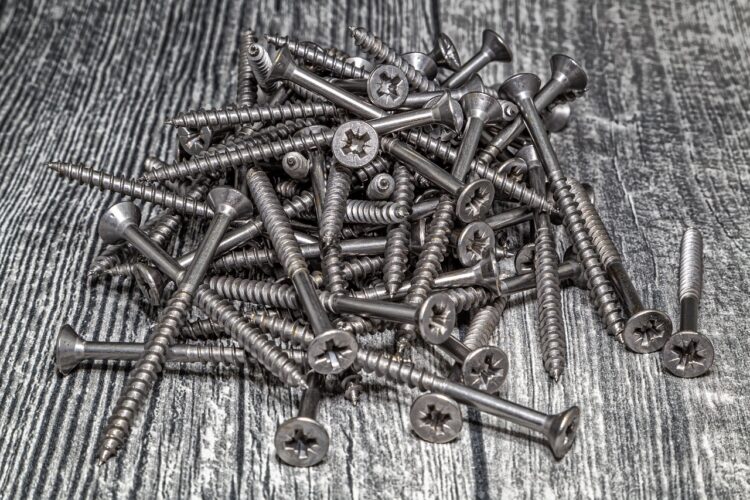
430 stainless steel is known for its exceptional corrosion resistance, making it an ideal material for applications exposed to harsh environments, moisture, or chemicals. Due to its high resistance to rust and staining, stainless steel is a common material used for household items and kitchen appliances.
430 stainless steel is a low-cost, readily available option that is easy to work with, making it ideal for many applications.
430 stainless steel has a high melting point, making it suitable for regular-temperature environments such as industrial ovens and furnaces, where it can endure high temperatures without weakening or losing its structural integrity.
430 stainless steel is ductile and can be easily formed into various shapes, which makes it perfect for intricate designs and applications that require complex shapes due to its low carbon content.
The corrosion-resistant properties of 430 stainless steel make it low maintenance and eliminate the need for frequent cleaning or special coatings.
430 stainless steel is highly resistant to oxidation, maintaining its strength and appearance even when exposed to air and moisture for extended periods.
SS 430 is magnetic, which makes it suitable for applications requiring magnetism, such as producing magnetic components or as a base material for electromagnets.
430 stainless steel is versatile and can be used for automotive, kitchen, industrial, and architectural applications due to its unique properties.
304 and 430 Stainless Steel are two distinct types of stainless steel that are commonly used in various applications. 304 Stainless Steel is preferred for food-grade applications, whereas 430 Stainless Steel is more frequently used in construction and industrial environments. The primary difference between 430 and 304 Stainless Steel is their chromium content. SS 304 material contains 18% chromium, while SS 430 contains 16%.
430 stainless steel has a higher chromium content, making it more corrosion-resistant and tarnish-resistant. Moreover, adding nickel to 430 stainless steel gives it a higher hardness than 304 stainless steel. This property makes it an ideal option for various applications requiring greater wear and tear, such as industrial equipment or kitchen utensils. Although there is a significant difference between 304 and 430 stainless steel, both materials are considered high quality and durable.
430 and 316 stainless steel are grades with significant composition, properties, and application differences. However, they can be used interchangeably in situations with lower stress and milder environments. SS 316 is a closely related alloy to SS 304, sharing many properties while enhancing its performance in many ways.
430 stainless steel is made from a BCC, ferritic crystalline matrix and contains 16-18% chromium, below 0.12% carbon, and nickel content of 0-0.75%, with trace or zero molybdenum. This makes it a low-cost material compared to 316 stainless steel, which is an austenitic stainless steel containing 16-18% chromium, 10-14% nickel, and 2-3% molybdenum, with a very low carbon content of less than 0.08%. The presence of elevated nickel and molybdenum in 316 steel improves its properties in commercially beneficial ways.
430 stainless steel is highly heat tolerant and can withstand intermittent high-temperature exposure without significant negative consequences. However, it responds poorly to continuous high-temperature applications. On the other hand, SS 316 is highly heat tolerant and can withstand continuous high-temperature exposure without significant scaling or deformation, retaining its corrosion resilience at elevated temperatures.
430F stainless steel is a ferritic alloy containing straight chromium and melted using the AOD (Argon Oxygen Decarburization) process. 430f steel is similar to 430 steel but has increased sulfur content, significantly enhancing its machinability. However, due to the sulfur content, this alloy is not as easy to form as the standard 430 but still retains moderate ductility.
430 stainless steel is popular in various industries due to its durability and corrosion resistance. However, it has some limitations, such as lower strength and susceptibility to pitting corrosion. Therefore, it is crucial for individuals or companies to carefully assess their specific needs before selecting this steel for their projects. With proper care and maintenance, 430 stainless steel can be a cost-effective and dependable option for many applications. In conclusion, weighing the advantages and disadvantages before deciding is essential. As one of China’s famous 430 stainless steel suppliers, we offer various stainless steel parts. Contact us now for a fast inquiry.

